After a year of upheaval and disruption in 2022, there is keen interest to understand what to expect next from the global economy in 2023. And the picture that’s emerging is very mixed. While some of the issues that caused macroeconomic disruption in 2022 are expected to stabilize during 2023, new challenges are emerging, including a weakening outlook for global labor markets and a growing risk of a slowdown in China’s economic growth. Overall, growth prospects remain constrained and the global economy is still at risk of recession.
But the picture varies considerably by country and region, with local factors having a strong impact on the resilience of economies. The picture is also very different between emerging and advanced economies, with emerging markets expected to recover faster than their advanced counterparts.
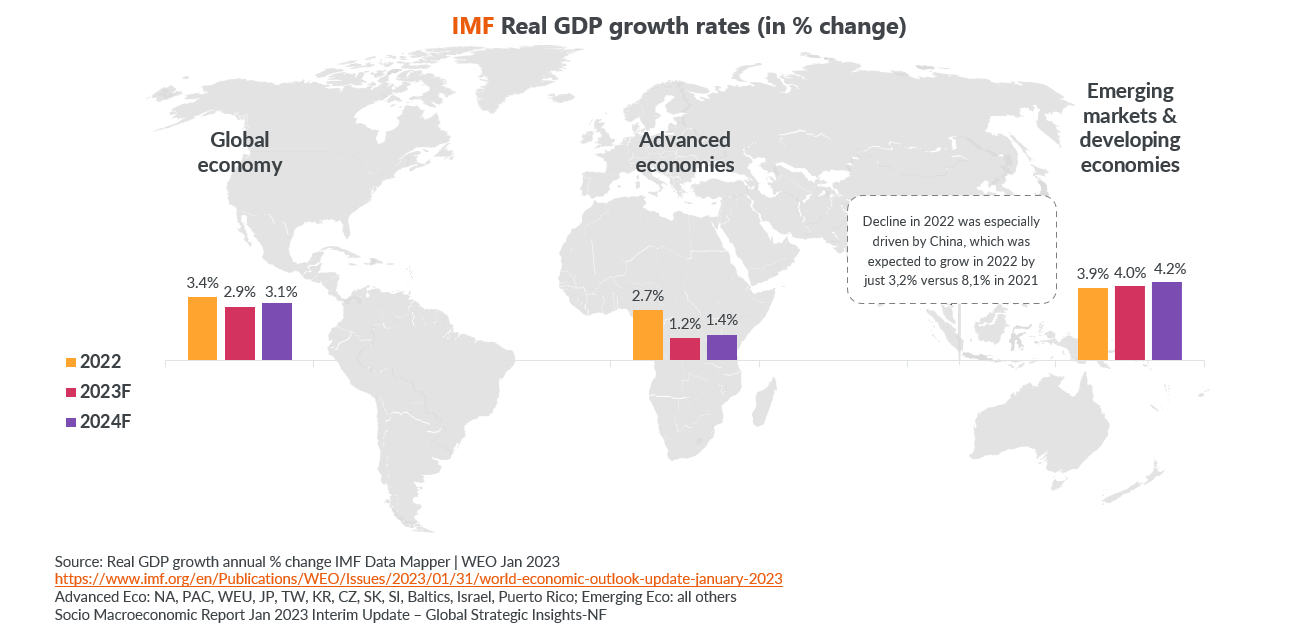
Drilling down to a country level, the picture becomes even more nuanced. European economies, in particular, are expected to struggle during 2023, with half of all countries in Europe likely to experience a technical recession during the year. In contrast, China and India combined will account for 50% of the global GDP growth in 2023.
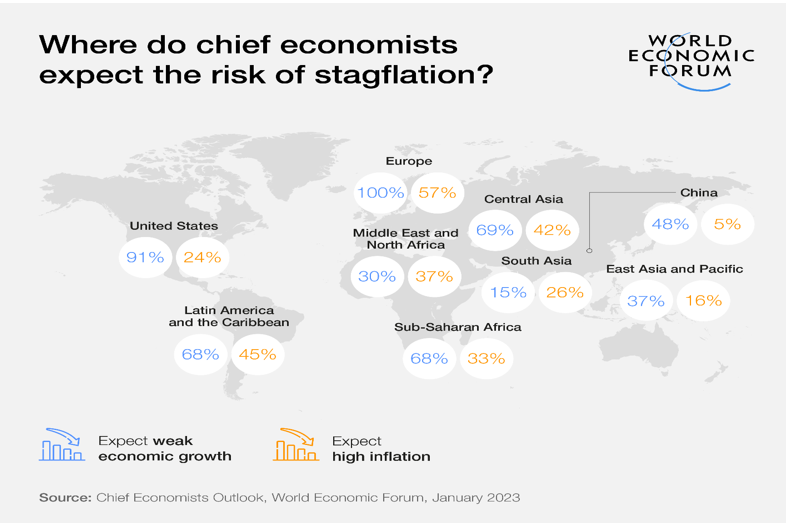
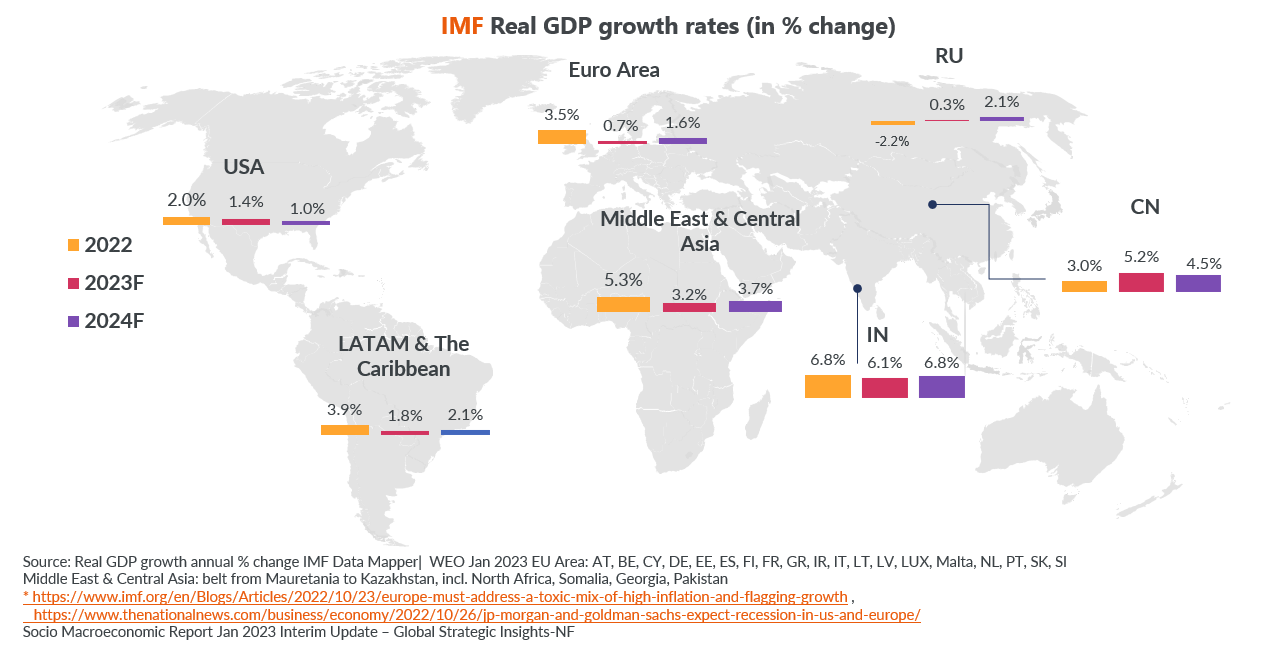
With such divergent pictures emerging, localized strategies will be the key to capturing growth for brands and retailers. Understanding how each country and region is likely to respond across a number of potential scenarios is essential to planning for success.
Impact of disruptions play out differently
Inflation situation
Although inflation began to ease slightly in December, it remains high and continues to weigh on consumer sentiment. Although prices have plateaued on a high level, it is primarily energy and food prices that are continuing to drive inflation.
Therefore, countries that are particularly exposed to changes in energy and food prices will be impacted more. Europe’s reliance on gas for 22% of its electricity generation makes it susceptible to rising prices and ongoing disruptions. Even if prices moderate during 2023, it remains at risk of energy shortages into next winter.
This disproportionate impact can also be seen in rising energy expenditures across countries. The European countries most reliant on gas have seen energy expenditure as a percentage of GDP rise more significantly.

Looking ahead, any further rises in energy prices are likely to have a pronounced effect on OECD Europe, but less so across the rest of the world. When you look at the cost of living crisis, food cost, cost for borrowing (debt servicing cost) and plunging real wages are also putting pressure on consumers. Households are feeling the dual pinch of the high cost of heating and eating alongside the impact of monetary policy put in place to combat inflation. The potential impacts of these scenarios need to be factored into manufacturing and retail planning for the year ahead.
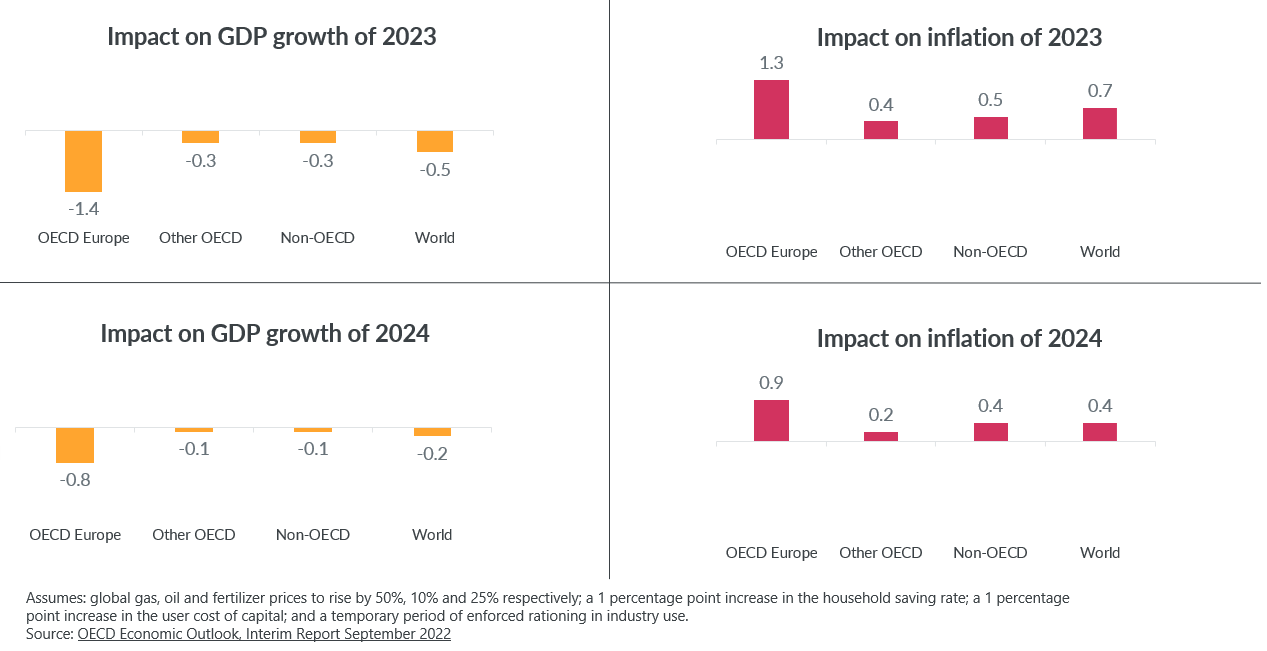
Labor market weakening
Following a long period of tight labor markets during the pandemic and immediately after, the global outlook for labor markets deteriorated significantly during 2022. Although unemployment remained broadly stable throughout 2022, job growth prospects have slowed notably in North America and Europe and headlines are dominated by news of layoffs and restructuring at large global firms. But again, the picture is very different across locations, making it essential to understand the factors impacting the labor market in each country and the knock-on effect on wages and consumer sentiment.
Economic superpowers to watch
Economic growth in China: an uncertain outlook
Although China will remain one of the major engines of global growth in 2023, there are looming uncertainties too. After China’s ‘Zero-Covid’ policy was lifted, the IMF raised its GDP growth expectations for the nation to 5.2% in 2023 (up from an initial projection of 4.4%). But the IMF does not expect it to grow as strongly in 2024 due to a number of factors.
Chinese property markets, which contribute around a quarter of China’s GDP, have been slowing, with commercial housing sales down by 27.9% and residential sales down by 30.3%. There are also many unfinished housing projects. Meanwhile, a tight labor market has led wages to double over the last decade, making it a less advantageous destination for international companies looking for cost-effective labor.
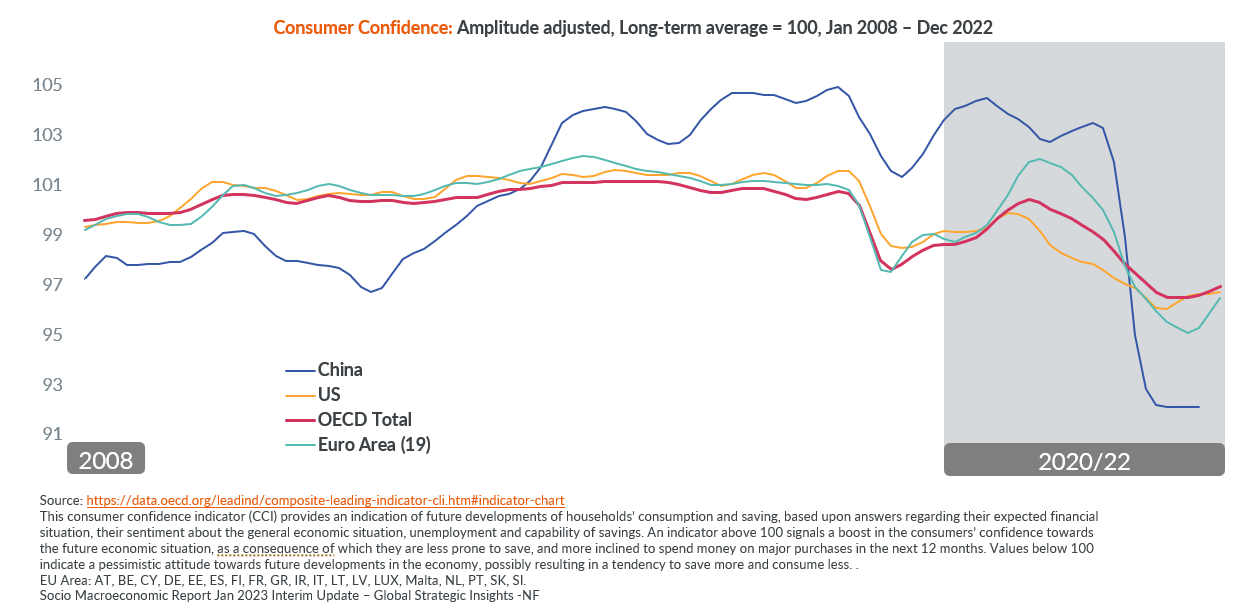
Adding to the economic challenges are geopolitical tensions. The US-China relationship has been in the spotlight for some time now. And China-Taiwan geopolitical tensions are certainly concerning.
Any slowdown in China’s economic growth could have far-reaching impacts for the global economy due to their importance as both a consumer and producer of goods.
India: a market of opportunities
In contrast, Indian economic growth is expected to continue to grow strongly into 2024. Having recently overtaken China as the world’s most populous nation, it benefits from having a much younger population – 67.5% of its population is between the ages of 15 and 64. It also has huge pockets of untapped economic potential in remote and rural areas, which it is working progressively to electrify and digitalize over the coming years.
In 2022, economic strength translated into very strong growth in revenues for technical consumer goods, with the market growing by 31% in local currency terms, significantly outpacing inflation, which was only at 5.7% in December 2022. The Indian economic growth forecast makes it very likely it will become an ever more important market in the years ahead.
Economic outlook 2023: Be prepared for everything
With a number of issues continuing to weigh on economies and impact consumers, 2023 looks set to be a challenging year. But countries and regions will respond differently depending on how macroeconomic factors and geopolitical situations develop over the year ahead. Comprehensive scenario planning will be an important tool to help brands and retailers looking to prepare for whatever lies ahead.
Find out more about the growth prospects of different regions in our State of Tech & Durables Webinar.
![]()




